VANCOUVER, BC, September 27, 2023 – Nevada King Gold Corp. (TSX-V: NKG; OTCQX: NKGFF) (“Nevada King”, “NKG” or the “Company”) is pleased to announce assay results from 13 vertical, reverse circulation (“RC”) holes recently completed within the North Extension Target (“NET”) at its Atlanta Gold Mine Project, located in the prolific Battle Mountain Trend 264km northeast of Las Vegas, Nevada. Today’s holes are plotted in plan and on Sections 22-24N through 22-30N in Figures 1 to 8 below.
NET Highlights:

- Today’s release outlines an area of shallowly hosted oxide gold mineralization spanning 250m long x 250m wide (outlined in purple in Figure 1) located approximately 600m north of the historic Atlanta Pit, along the northerly-trending Atlanta Mine Fault Zone (“AMFZ”). This mineralization occurs within the overall NET target area (shaded red in Figure 1), which was originally identified through limited historical drilling, but was not pursued through more detailed drilling due to low grades and lean thicknesses.
- Nevada King’s intercept of 8.26 g/t Au over 9.1m within 4.64 g/t Au over 18.3m in AT21-003 (November 22, 2021) was the first high-grade intercept at this target and transformed the Company’s interpretation of the NET’s potential. Subsequent intercepts including 1.67 g/t Au over 24.4m in AT22NS-13 (November 23, 2022) and 1.83 g/t Au over 21.3m in AT22NS-15 (December 20, 2022) further expanded the interpreted envelope of higher-grade “core” mineralization localized along the AMFZ.
- As seen in Figures 2-8, mineralization occurs along a gently west-dipping horizon developed at the contact between basal Ordovician age dolomite and overlying Tertiary age volcanics. This contact is vertically displaced 60m to 80m across the northerly-trending AMFZ with the west side down.
- The highest grade intervals are found proximal to the AMFZ along a 50m-wide corridor centred on the fault zone, as demonstrated by 4.01 g/t Au over 21.3m in AT23NS-112. Gold grades tend to gradually decrease westward and eastward from the AMFZ, although high-grade does occur outside of this corridor at the intersection of secondary faults or feeders, including highlight hole AT23NS-109 grading 3.69 g/t Au over 13.7m, 100m west of the AMFZ.
- Mineralization within the NET shows strong lateral continuity and remains open to the south, west, and east, where it gradually shallows east of AT23NS-127 and trends into the currently untested East Ridge Target. The Company will focus additional drilling near to and east of the AMFZ with the goal of expanding the resource to include this area, where grades and thicknesses may be shallow enough to support stripping in a potential mining scenario. NET mineralization is not included in the existing resource.
Cal Herron, Exploration Manager of Nevada King, stated, “Sniffs of mineralization within the NET were found by past operators Kinross and Meadow Bay, but their drill patterns did not hit the higher-grade AMFZ, and consequently, the area was overlooked. By applying the Company’s new geological model, Nevada King’s drilling has consistently hit higher-grade mineralization by focusing on identifying and targeting the high-angle feeder faults responsible for channeling high-grade gold along the AMFZ. Similar to drilling conducted by the Company further south in and around the Atlanta Pit, applying the new geological model has proven key to unlocking the potential of the NET. The Company will continue to expand the gold zone eastward, westward, and southward in the coming months, paying particular attention to suspected high-angle structures adjacent to the AMFZ that might result in thicker and higher grade mineralization within the low grade horizon. It is important to note all mineralization within the NET is oxidized.”
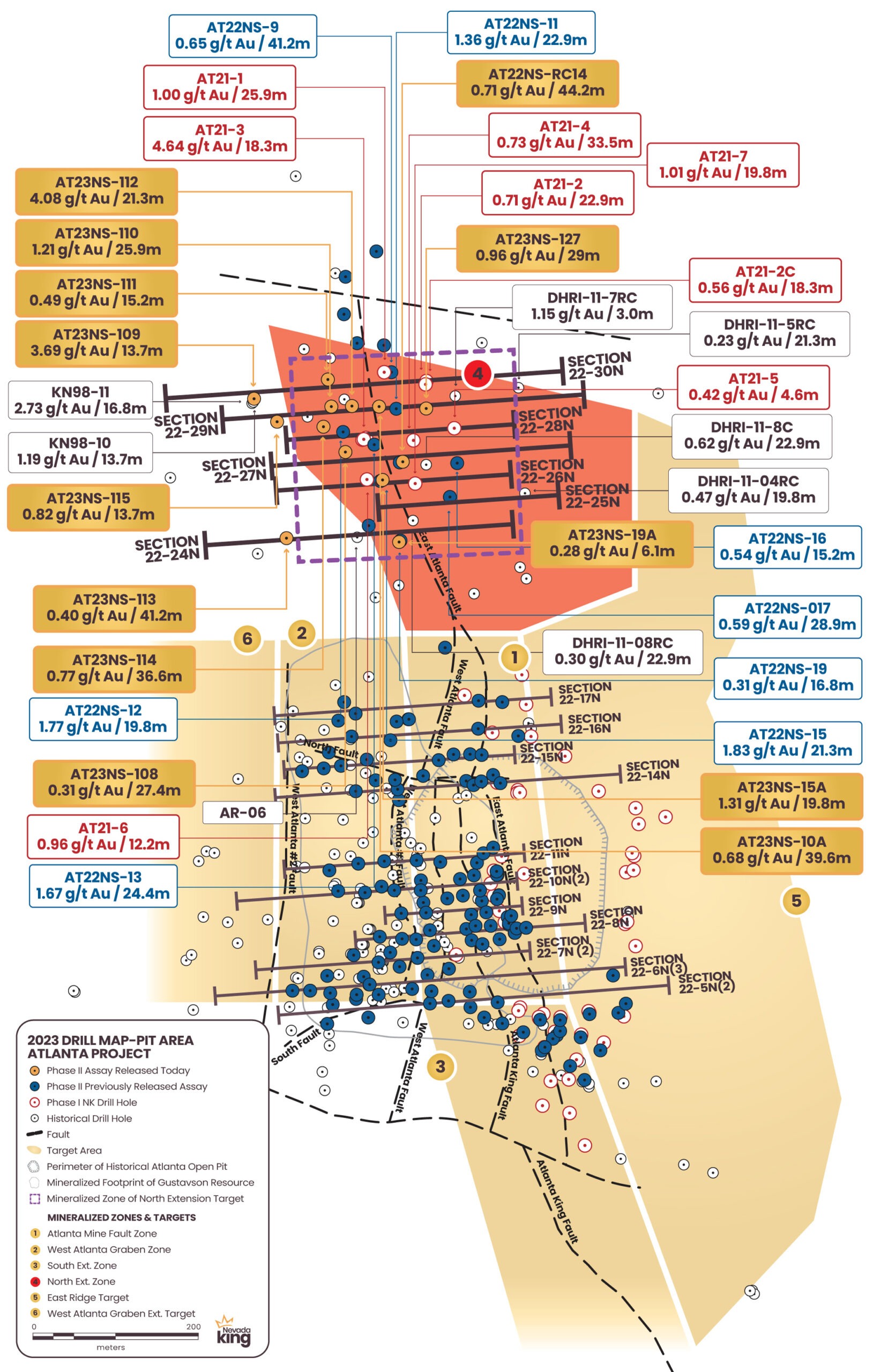
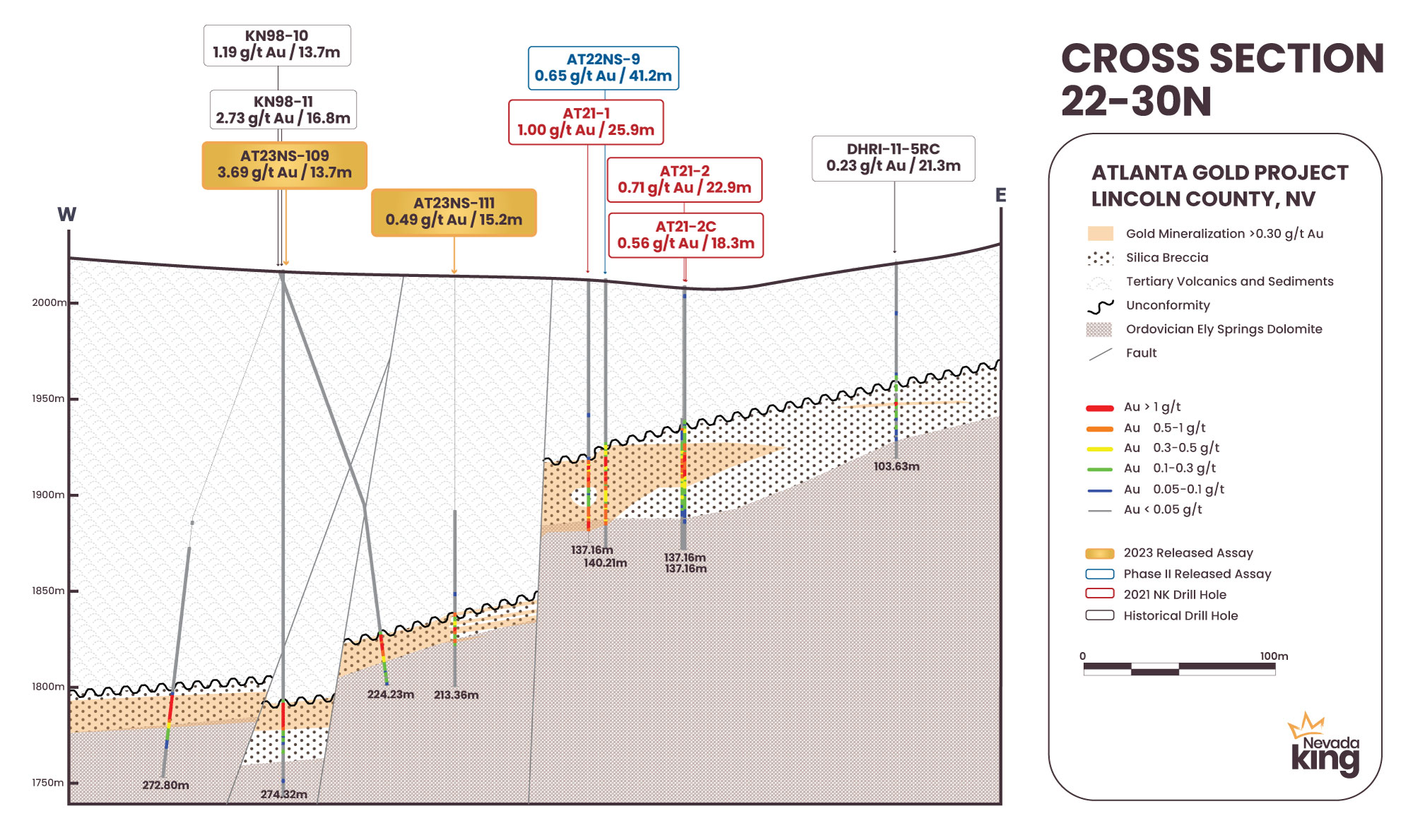
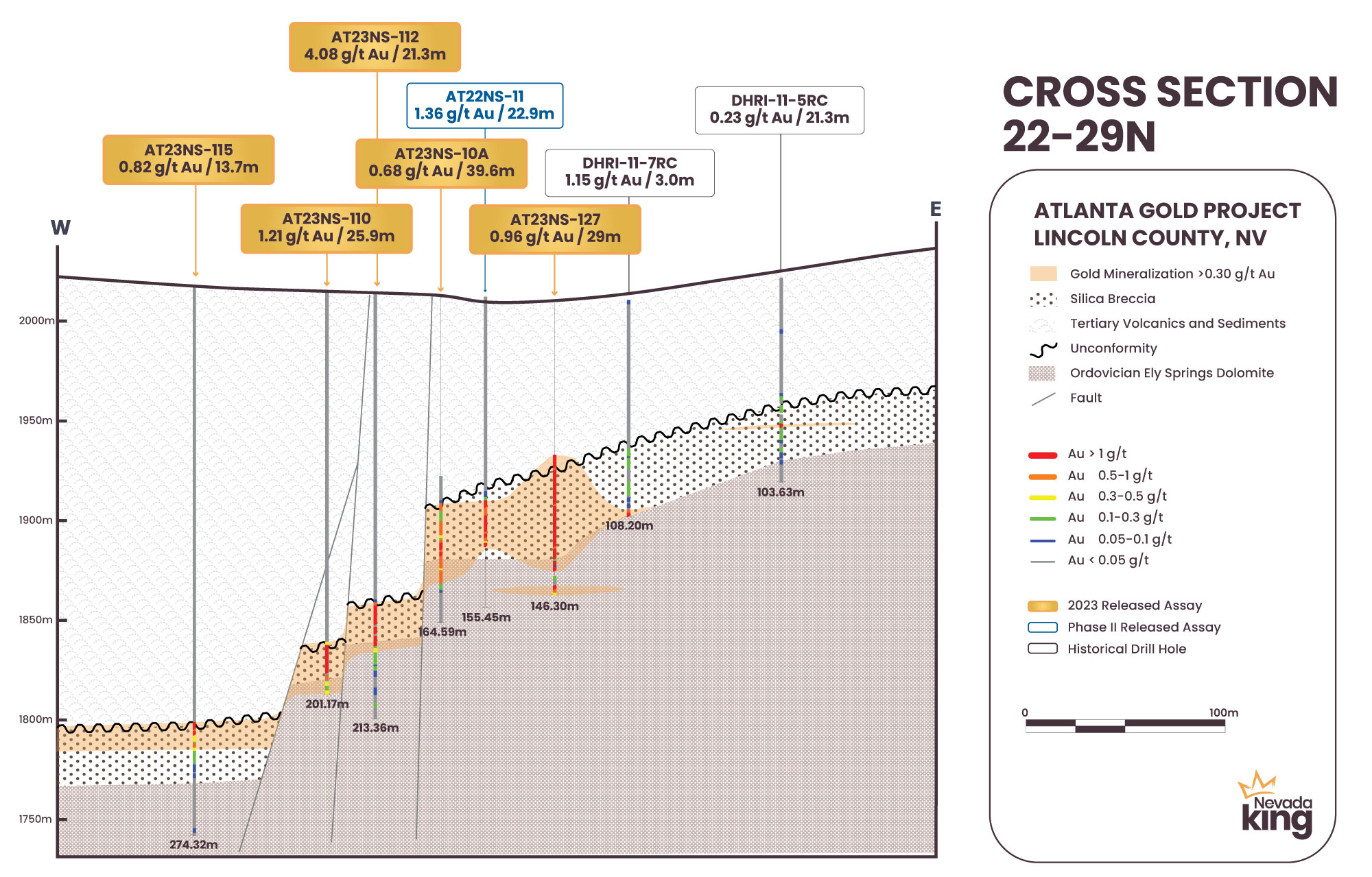
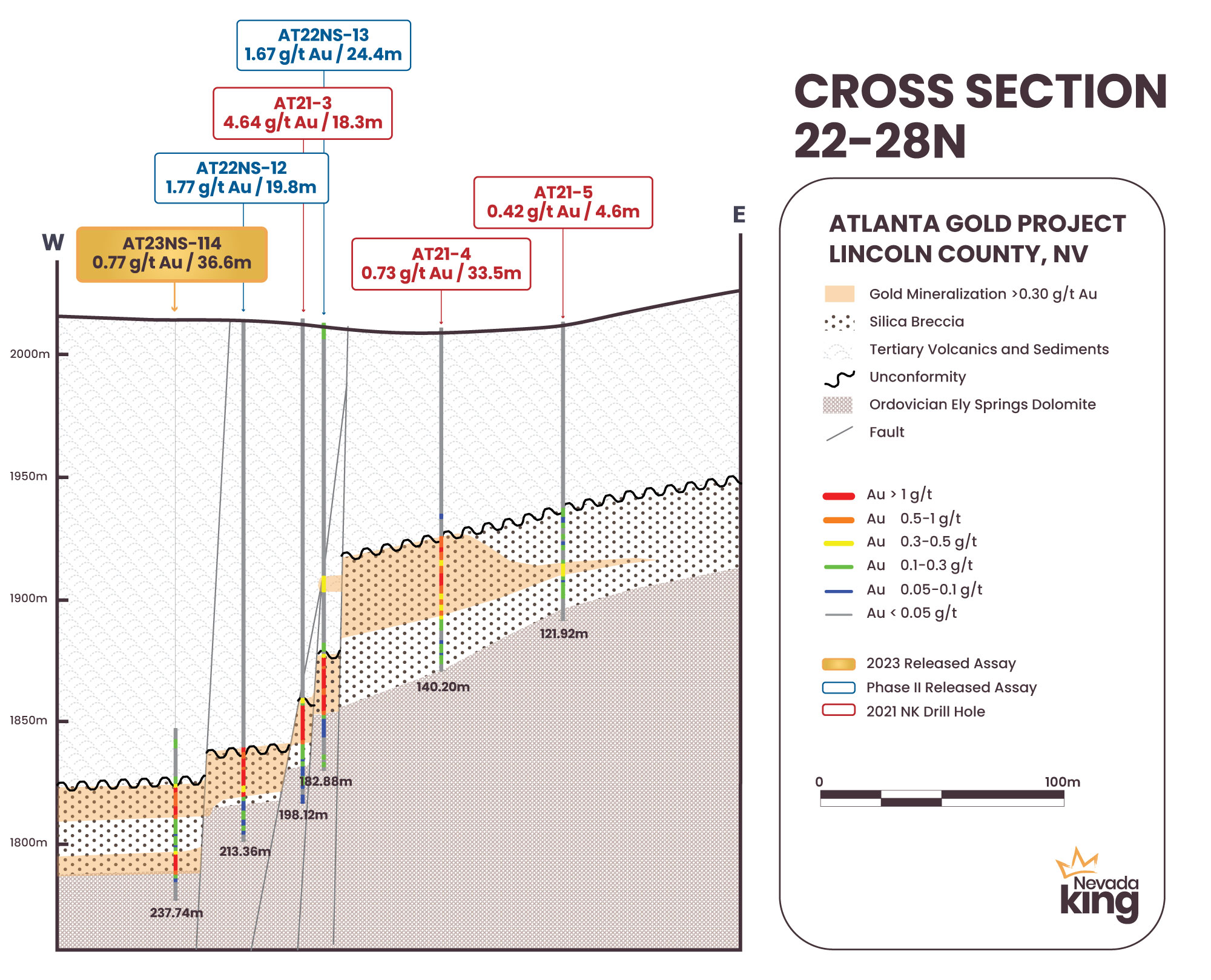
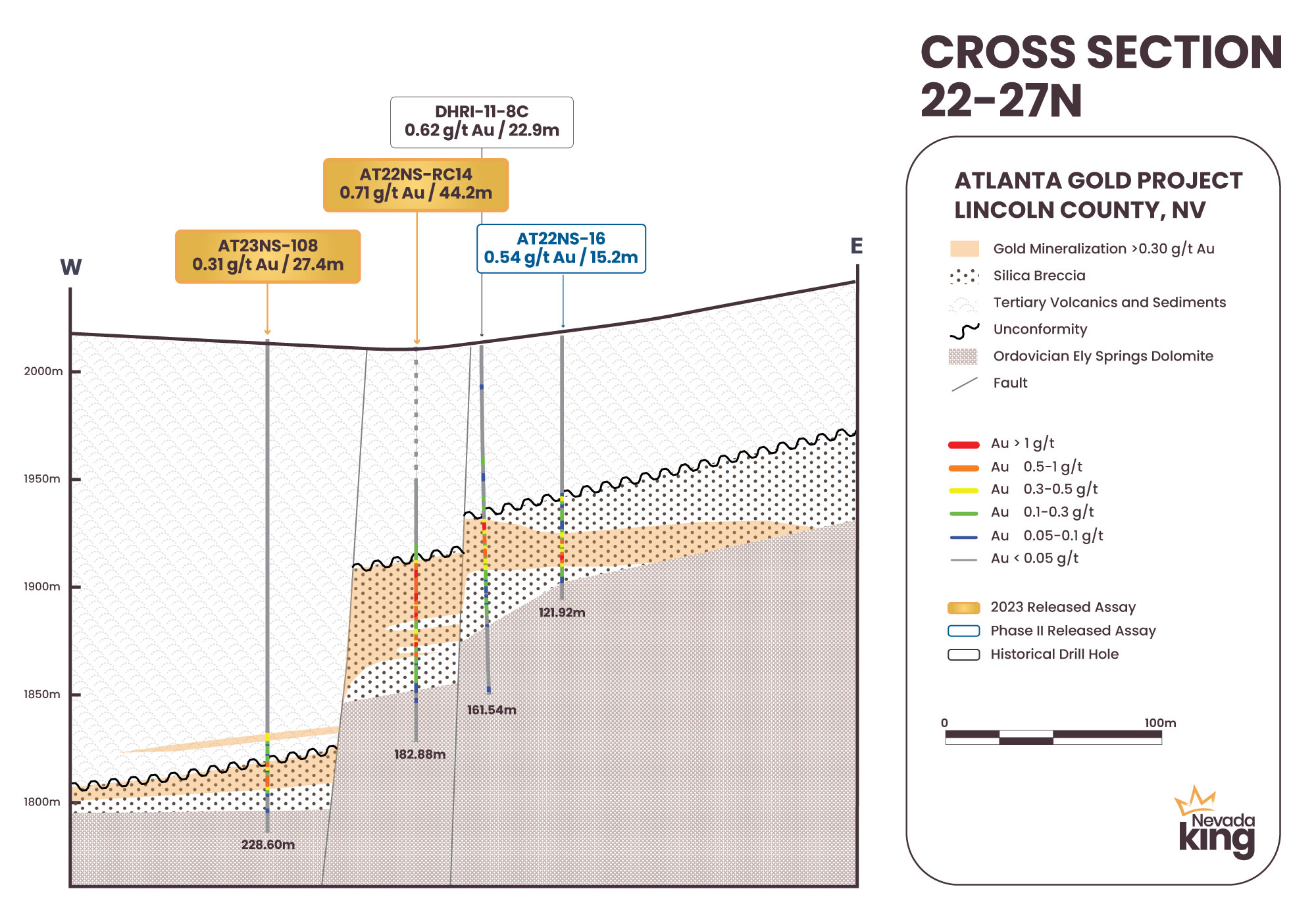



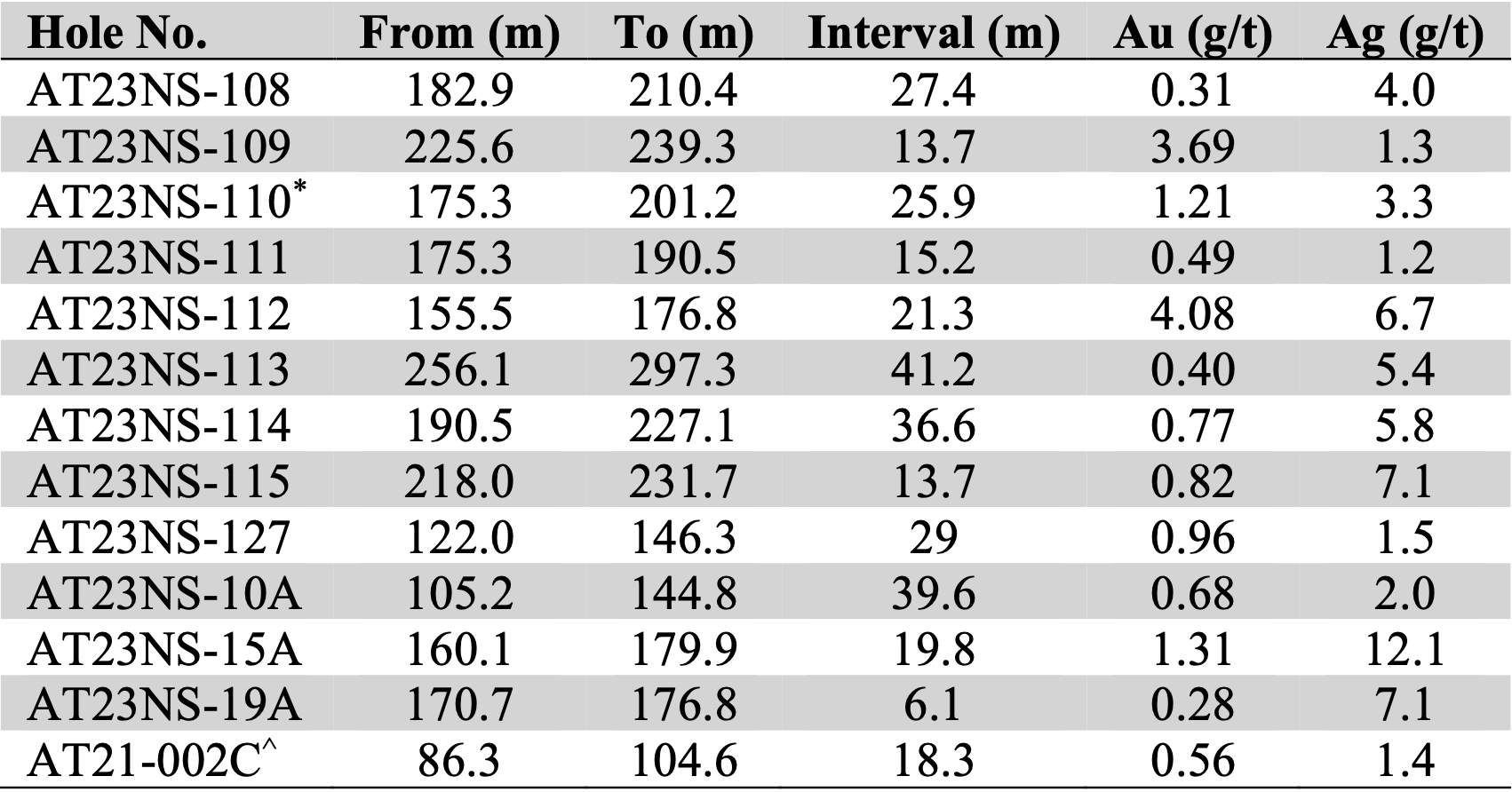
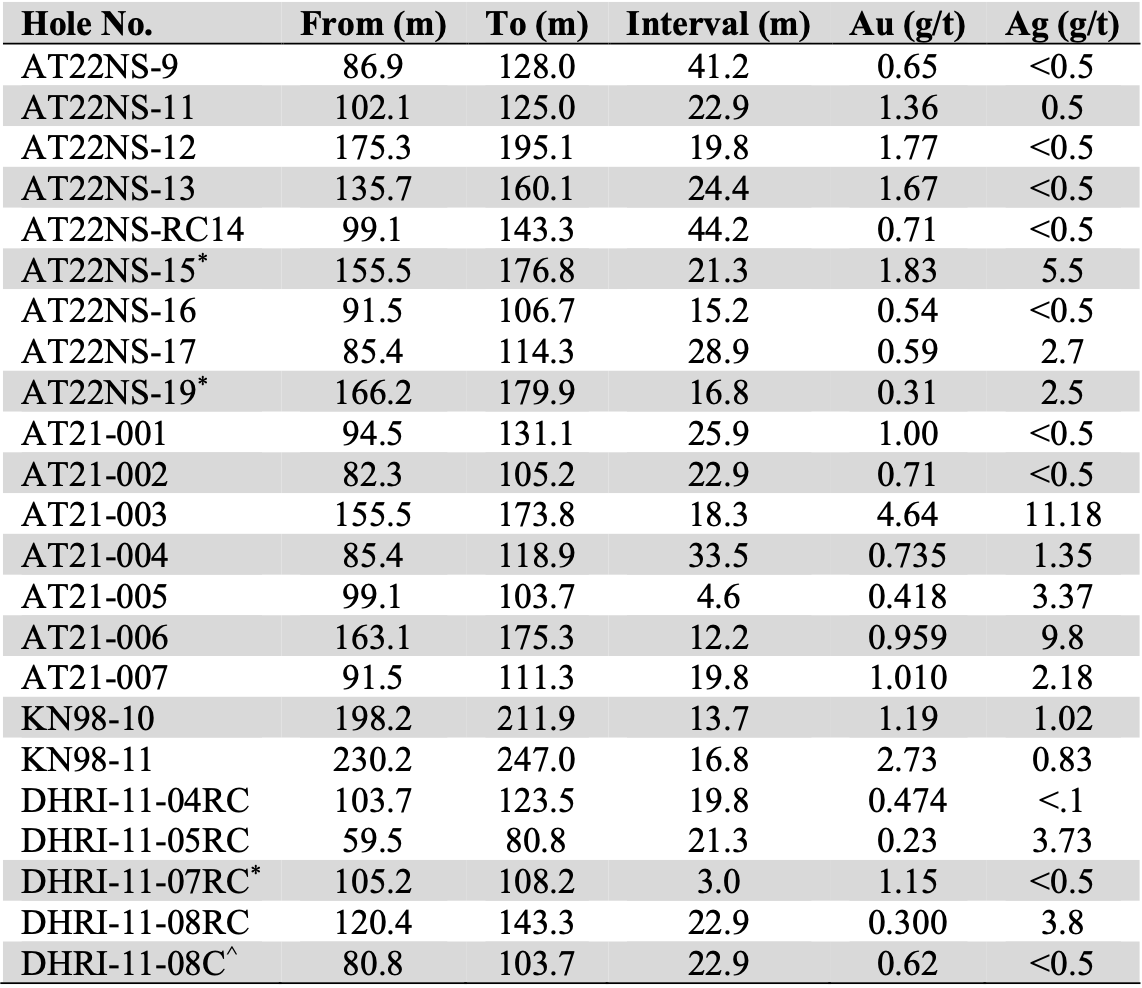
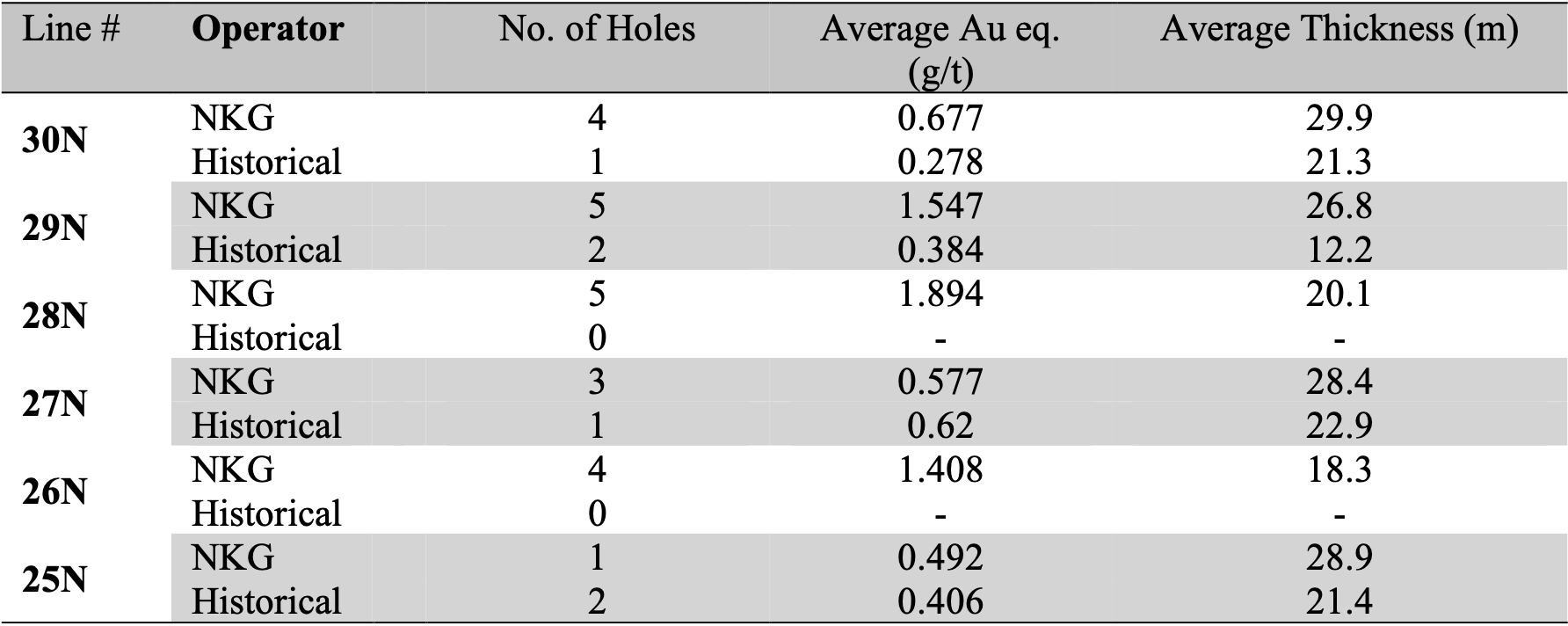
QA/QC Protocols
All Reverse Circulation (RC) samples from the Atlanta Project are split at the drill site and placed in cloth and plastic bags utilizing a nominal 2kg sample weight. CRF standards, blanks, and duplicates are inserted into the sample stream on-site on a one-in-twenty sample basis, meaning all three inserts are included in each 20-sample group. Samples are shipped by a local contractor in large sample shipping crates directly to American Assay Lab in Reno, Nevada, with full custody being maintained at all times. At American Assay Lab, samples were weighed then crushed to 75% passing 2mm and pulverized to 85% passing 75 microns in order to produce a 300g pulverized split. Prepared samples are initially run using a four acid + boric acid digestion process and conventional mutli-element ICP-OES analysis. Gold assays are initially run using 30-gram samples by lead fire assay with an OES finish to a 0.003 ppm detection limit, with samples greater than 10 ppm finished gravimetrically. Every sample is also run through a cyanide leach for gold with an ICP-OES finish. The QA/QC procedure involves regular submission of Certified Analytical Standards and property-specific duplicates.
Qualified Person
The scientific and technical information in this news release has been reviewed and approved by Calvin R. Herron, P.Geo., who is a Qualified Person as defined by National Instrument 43-101 (“NI 43-101”).
About Nevada King Gold Corp.
Nevada King is the third largest mineral claim holder in the State of Nevada, behind Nevada Gold Mines (Barrick/Newmont) and Kinross Gold. Starting in 2016 the Company has staked large project areas hosting significant historical exploration work along the Battle Mountain trend located close to current or former producing gold mines. These project areas were initially targeted based on their potential for hosting multi-million-ounce gold deposits and were subsequently staked following a detailed geological evaluation. District-scale projects in Nevada King’s portfolio include (1) the 100% owned Atlanta Mine, located 100km southeast of Ely, (2) the Lewis and Horse Mountain-Mill Creek projects, both located between Nevada Gold Mines’ large Phoenix and Pipeline mines, and (3) the Iron Point project, located 35km east of Winnemucca, Nevada.
The Atlanta Mine is a historical gold-silver producer with a NI 43-101 compliant pit-constrained resource of 460,000 oz Au in the measured and indicated category (11.0M tonnes at 1.3 g/t) plus an inferred resource of 142,000 oz Au (5.3M tonnes at 0.83 g/t). See the NI 43-101 Technical Report on Resources titled “Atlanta Property, Lincoln County, NV” with an effective date of October 6, 2020, and a report date of December 22, 2020, as prepared by Gustavson Associates and filed under the Company’s profile on SEDAR+ (www.sedarplus.ca).
Please see the Company’s website at www.nevadaking.ca.
For more information, contact Collin Kettell at collin@nevadaking.ca or (845) 535-1486.
Neither the TSX Venture Exchange nor its Regulation Services Provider (as that term is defined in the policies of the TSX Venture Exchange) accepts responsibility for the adequacy or accuracy of this release.
Cautionary Statements Regarding Forward Looking Information
This news release contains certain “forward-looking information” and “forward-looking statements” (collectively “forward-looking statements”) within the meaning of applicable securities legislation. All statements, other than statements of historical fact, included herein, without limitation, statements relating the future operations and activities of Nevada King, are forward-looking statements. Forward-looking statements are frequently, but not always, identified by words such as “expects”, “anticipates”, “believes”, “intends”, “estimates”, “potential”, “possible”, and similar expressions, or statements that events, conditions, or results “will”, “may”, “could”, or” should” occur or be achieved. Forward-looking statements in this news release relate to, among other things, the Company’s exploration plans and the Company’s ability to potentially expand mineral resources and the impact thereon. There can be no assurance that such statements will prove to be accurate, and actual results and future events could differ materially from those anticipated in such statements. Forward-looking statements reflect the beliefs, opinions and projections on the date the statements are made and are based upon a number of assumptions and estimates that, while considered reasonable by Nevada King, are inherently subject to significant business, economic, competitive, political and social uncertainties and contingencies. Many factors, both known and unknown, could cause actual results, performance or achievements to be materially different from the results, performance or achievements that are or may be expressed or implied by such forward-looking statements and the parties have made assumptions and estimates based on or related to many of these factors. Such factors include, without limitation, the ability to complete proposed exploration work, the results of exploration, continued availability of capital, and changes in general economic, market and business conditions. Readers should not place undue reliance on the forward-looking statements and information contained in this news release concerning these items. Nevada King does not assume any obligation to update the forward-looking statements of beliefs, opinions, projections, or other factors, should they change, except as required by applicable securities laws.

